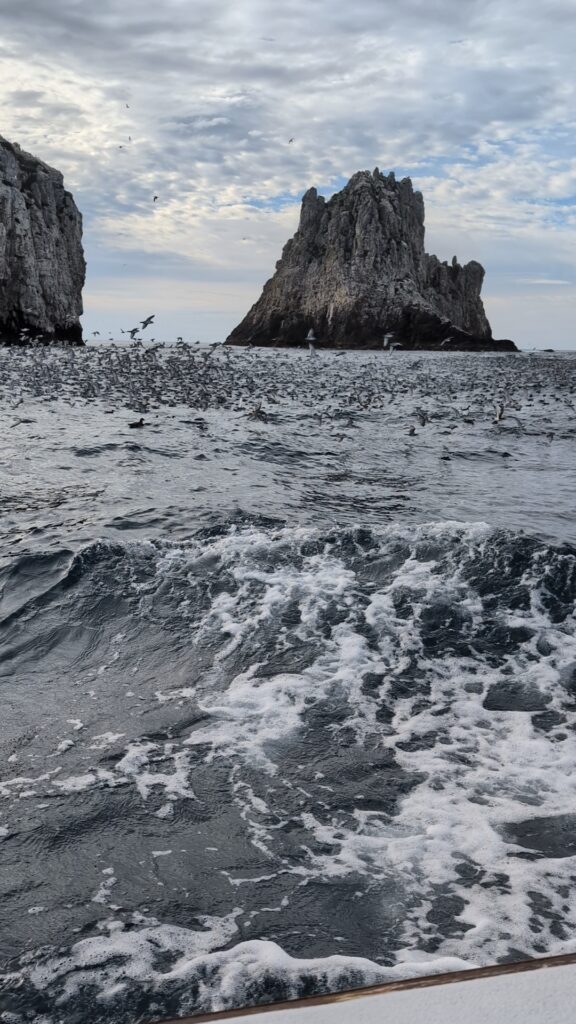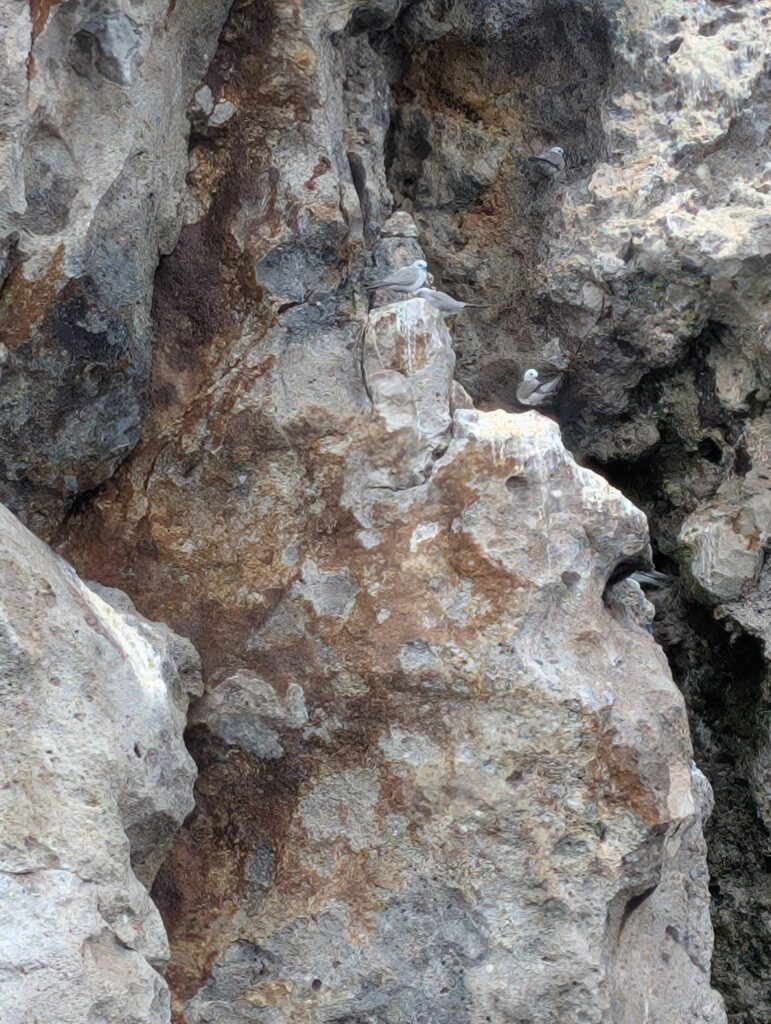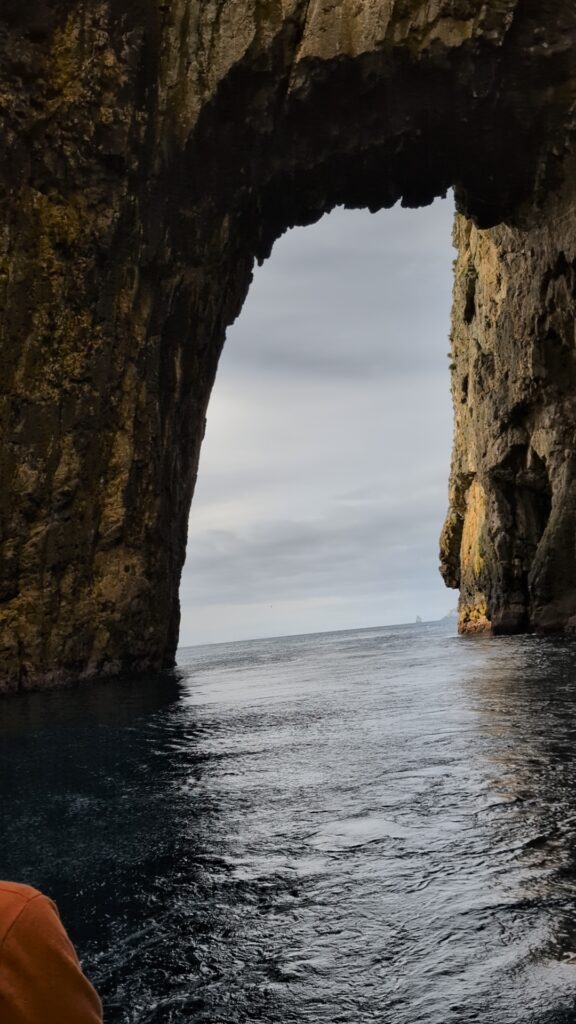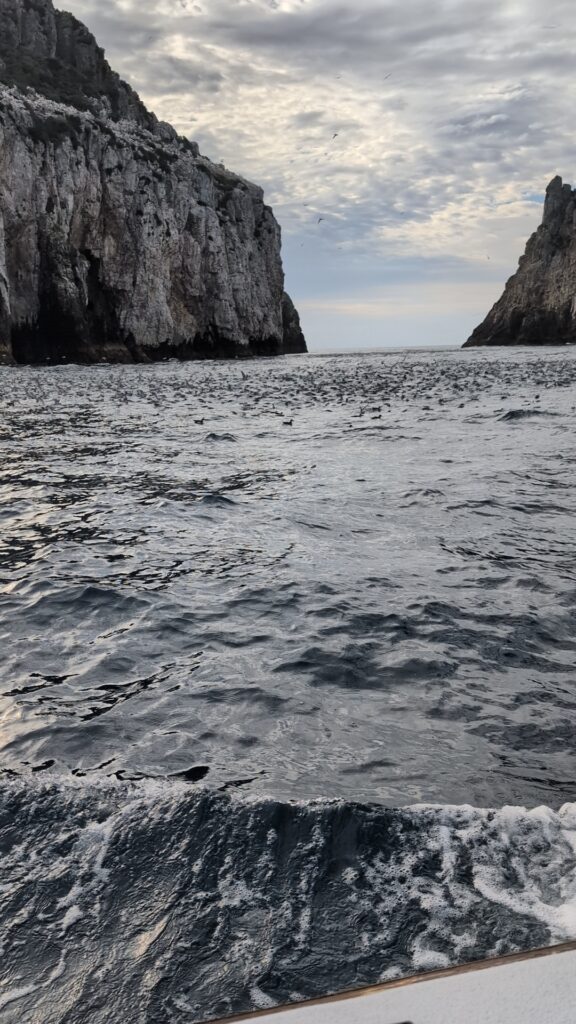Adam and I saw Little Spotted Kiwis at Zealandia near Wellington on a night tour on Friday November 29, 2025. Having seen a species of Kiwi cleared the way for me to not go on the Brown Kiwi night tour on Stewart Island on December 7. On December 7, therefore, I went on the day tour to Ulva Island conducted by Ulva’s Guided Tours after which at a little after noon, I left Stewart Island and flew to Auckland. I spent the night at the Ibis Hotel near the airport, left Auckland on the flight to Whangarei the morning of December 8, met my driver at the Whangarei Airport, drove to Tutukaka, spent the night at Quality Hotel Oceans adjacent to the Marina, and walked to the Marina at sunup on December 9 in time to join the Petrel Station pelagic tour.
Petrel Station Seabird Tours has a very good website. Anyone considering birding in New Zealand should check it out. Scott Brooks is the guide, and more, as he is a fine communicator who was immensely helpful to me in arranging details at Tutukaka. Up to the last minute he kept me informed of weather conditions, which were not ideal, and threatened to cause cancellation of the tour, but did not. Luke, the skipper, demonstrated skill with our small craft to allow the 7 birders, plus Scott and Luke, to see an immense number of seabirds well.
The boat trip itself is worth the money, not to mention the great numbers of seabirds we saw. Having been forewarned, I had supplied myself with a big package of ginger chewies to prevent seasickness, and they worked despite the choppy conditions, but they could not prevent a few scrapes and bruises when waves jolted the boat.
I am not good at using my cell phone but I managed to get a poor video of the great masses of pelagic birds at the Poor Knights Islands. The Poor Knights Islands themselves are spectacular. They are within a marine reserve famed as a scuba diving and snorkeling destination. The Marine Reserve produces lots of small fish for birds to eat. The Fairy Prions were unbelievably numerous, followed by the Buller’s Shearwaters.
Buller’s is a North American Shearwater, but they all (2,500,000 of them) nest only at the Poor Knights Islands. Following are pictures of the scene at the Poor Knights Marine Reserve:




Here is the list of the birds we saw as prepared by Scott and sent to the 7 of us at 7:46 P.M. December 9, the day of the tour (which lasted 10 hours, from 6:30 A.M. to 4:30 P.M.)
4 X White-capped Albatross (2 were previously seen by all 6 of us earlier off the north coast of Stewart Island).
48,000 X Fairy Prions (New species for me)
97 Cook’s Petrels (New for me)
1 Pycroft’s Petrel (New for me)
5 Grey-faced Petrels (New for me)
12 Black (formerly Parkinson’s) Petrels (New for me)
1,150 Fluttering Shearwaters (New for me).
6 Little Shearwaters (New) (New for me).
1 Wedge-tailed Shearwater
9 Short-tailed Shearwaters1 Sooty Shearwater
61 Flesh-footed Shearwaters
23,500 Buller’s Shearwaters (I saw 1 off California years ago, but they all nest at Poor Knights).
45 White-faced Storm Petrels (New for me)
7 New Zealand Storm Petrels (New for me)
40 Common Diving Petrels
2 Little Blue Penguins
6 Grey Ternlets (Gray Noddies) (New for me) (for a total of 10 new species for me).
2,050 Australasisn Gannets
1,190 Red-billed Gulls
2 Black-backed (Kelp) Gulls
76 Pied Shags (Cormorants)
1 Little Black Shag (Cormorant)
After the tour I was met at the marina by my driver (a retired New Zealand Government crop geneticist who spent time in Des Moines, Iowa working on the application by Pioneer Hi Bred Seed to sell seed corn in New Zealand). He drove me back to the Oceans hotel to pick up my bags, and then to Auckland, sometimes through heavy rain, to the Auckland Airport where I stayed the night at the Ibis Hotel, took the early Yellow Bus to the International Terminal, and flew to Sydney to rejoin my family on December 10.
The next New Zealand segment (No. 3) will feature Rotorua, the first stop on our itinerary.
